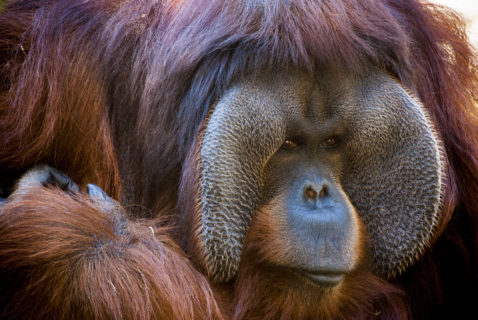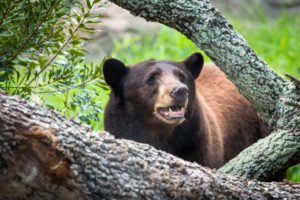Good News: Help Save Animals’ Homes from the Comfort of Your Home
 Earlier today you met Zookeeper Cheka and our orangutans, Rudi and Kelly. During today’s livestream, you likely learned that a number of animals that call the Houston Zoo home need trees to survive. From black bears and porcupines in Texas to macaws in South America and orangutans in Borneo, healthy forests provide animals with the food and shelter they need to live and thrive in the wild. By reducing your paper use or using recycled content paper products, you can help protect wild animals and their homes from the comfort of your own home!
Earlier today you met Zookeeper Cheka and our orangutans, Rudi and Kelly. During today’s livestream, you likely learned that a number of animals that call the Houston Zoo home need trees to survive. From black bears and porcupines in Texas to macaws in South America and orangutans in Borneo, healthy forests provide animals with the food and shelter they need to live and thrive in the wild. By reducing your paper use or using recycled content paper products, you can help protect wild animals and their homes from the comfort of your own home!
Here are some suggestions of ways you can save wild animals forested homes:
- Say no to printed receipts—instead ask for them to be emailed
- Use cloth napkins instead of paper
- Use washable/reusable plates and cups instead of paper
- Opt out of junk mail and cancel unwanted magazines—this can be done online through their websites
 At the Zoo, we help to save trees and protect animals like porcupines and black bears by using toilet paper made from recycled content. Don’t worry, the toilet paper itself is not made from old toilet paper! It is, however, made from paper that has been multiple other things first. By using recycled content toilet paper, less trees have to be cut down, which protects the forest homes of animals. Making new paper from old paper is also better for the environment as it reduces the demand for wood, reduces solid waste, conserves resources, and generates less pollution during manufacturing.
At the Zoo, we help to save trees and protect animals like porcupines and black bears by using toilet paper made from recycled content. Don’t worry, the toilet paper itself is not made from old toilet paper! It is, however, made from paper that has been multiple other things first. By using recycled content toilet paper, less trees have to be cut down, which protects the forest homes of animals. Making new paper from old paper is also better for the environment as it reduces the demand for wood, reduces solid waste, conserves resources, and generates less pollution during manufacturing.
Now, you might be asking yourself, does changing my toilet paper really make a difference? In short, yes! The average household uses 120 rolls of toilet paper each year. That’s 1 roll, every 3 days. That means over 25,000 trees are cut down every day to provide toilet paper for the world. By switching to recycled content, you’re ensuring those trees remain in the forest where they can continue to support wildlife.
Another way you can help save wildlife from home is to support the Zoo’s Emergency Zoo Fund, which helps us care for the animals at the Zoo and protect animals in the wild.
